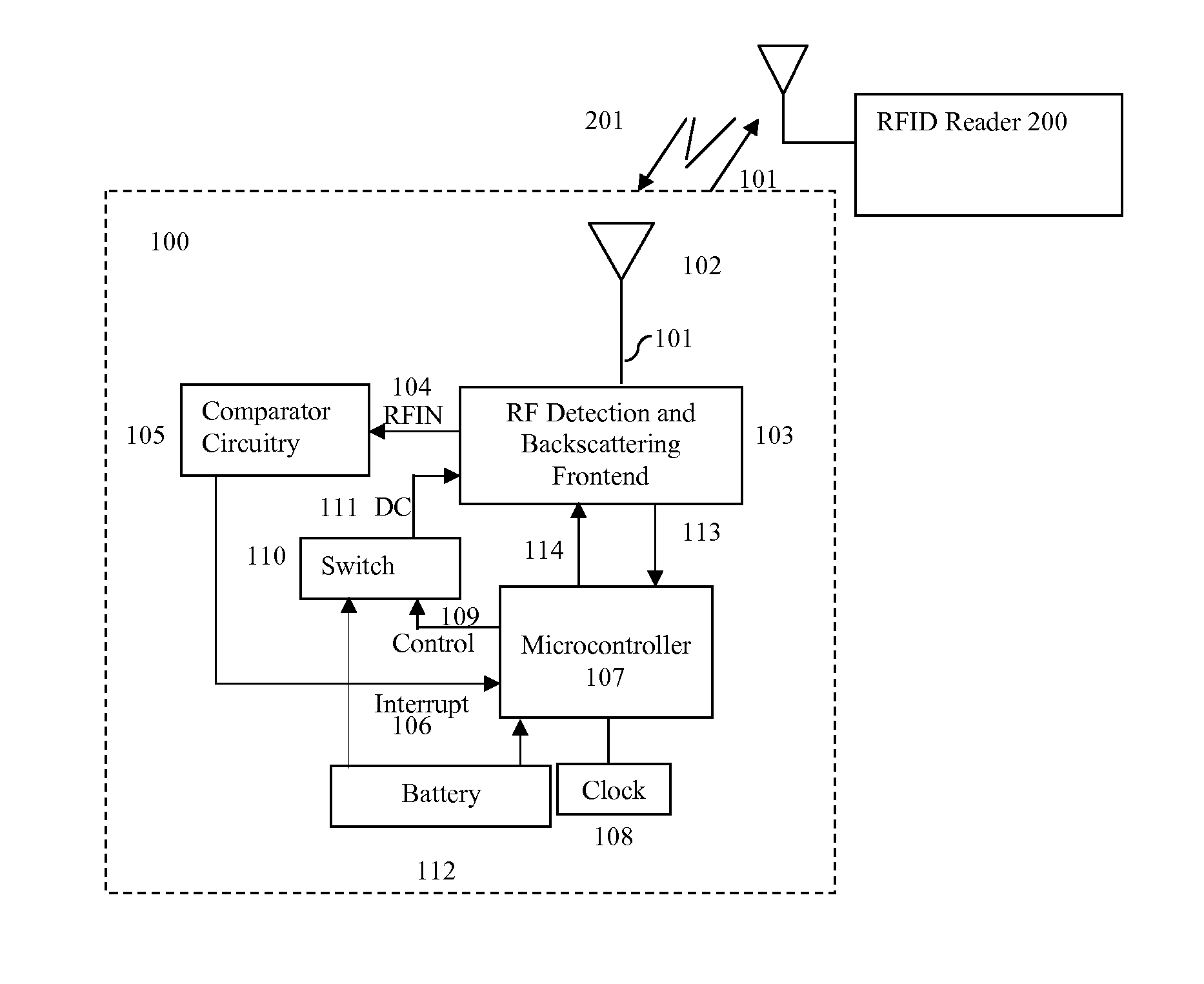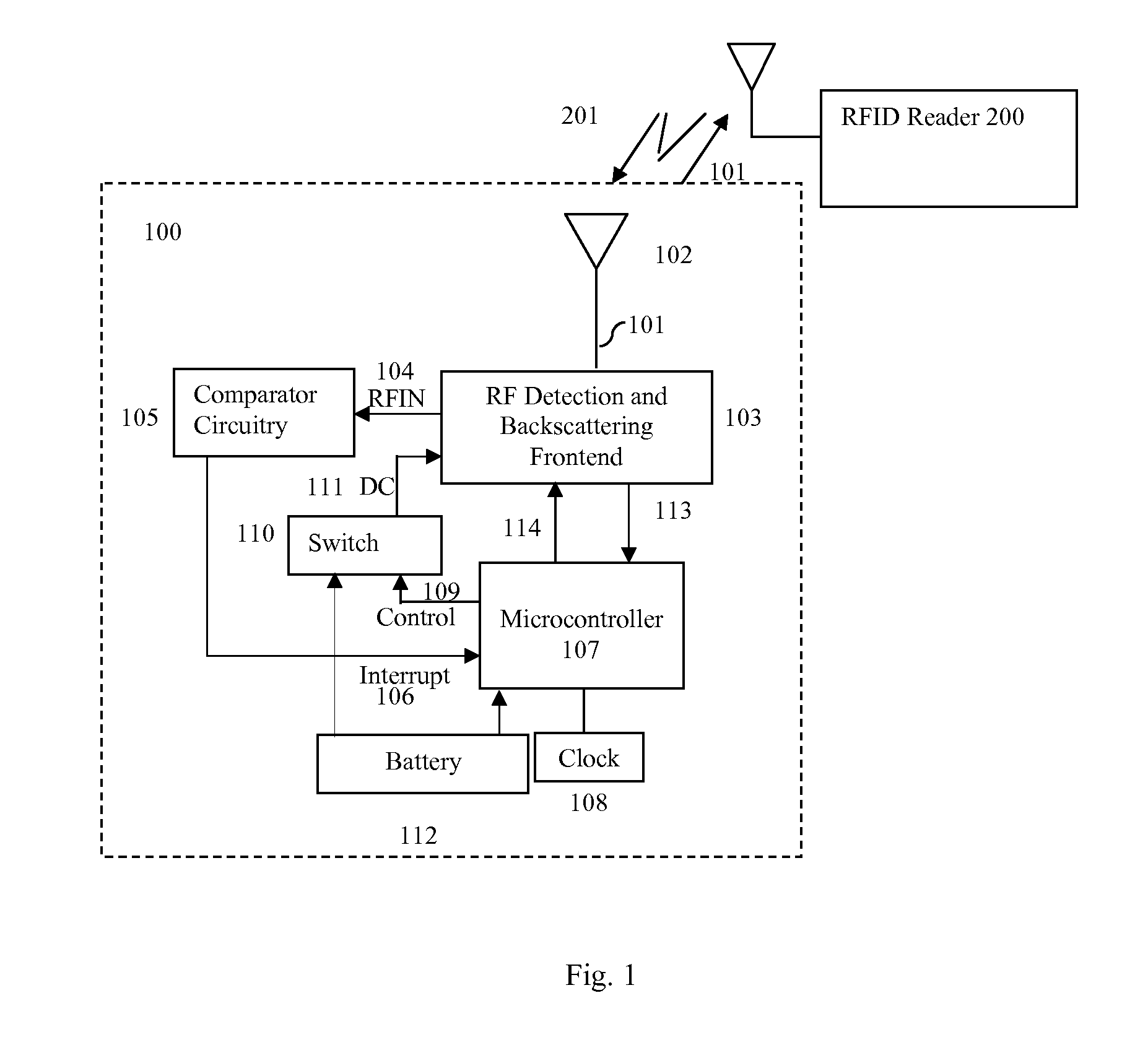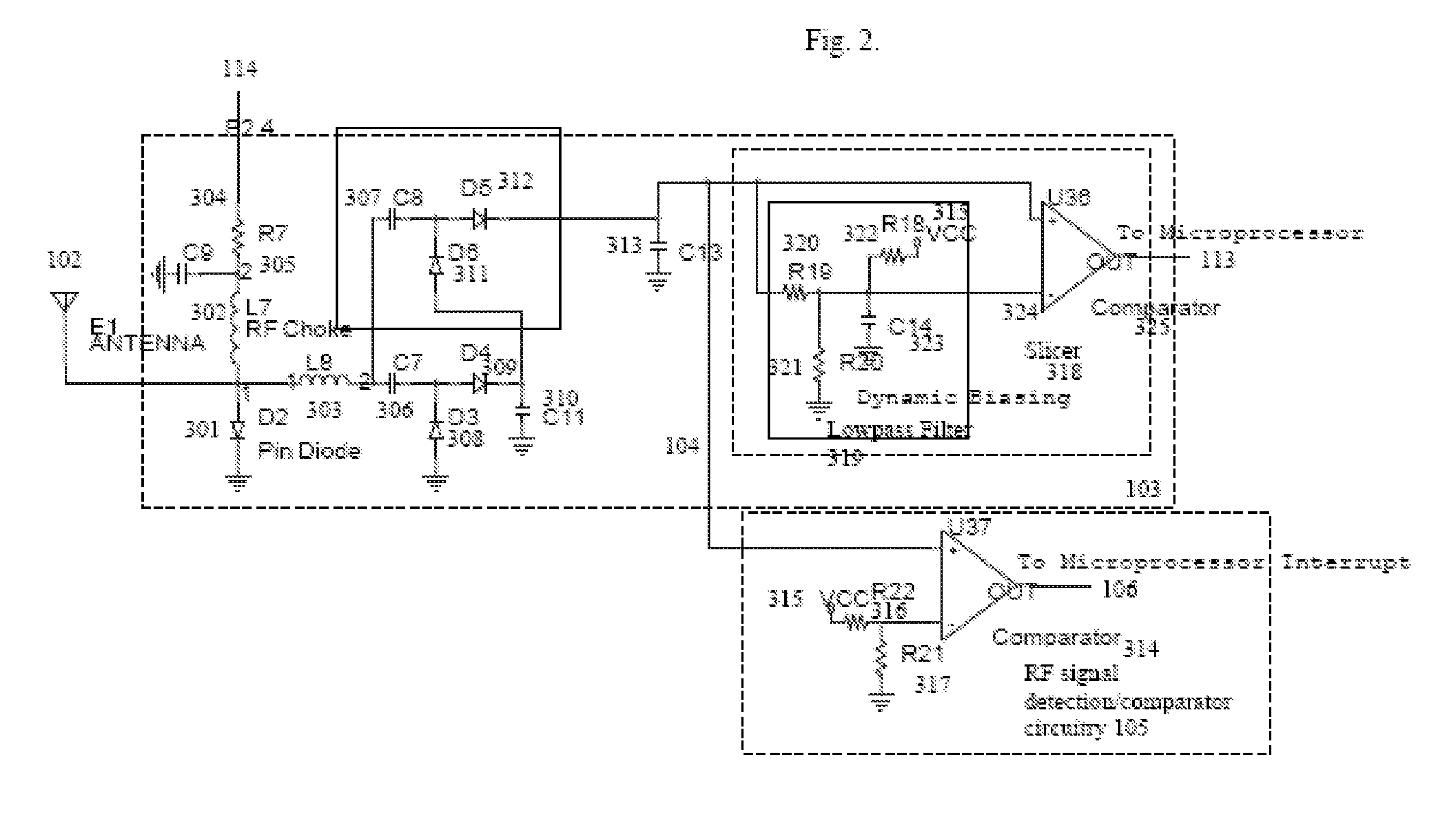Method and system for low cost, power efficient, wireless transponder devices with enhanced functionality
a wireless transponder and enhanced functionality technology, applied in the field of system and method, can solve the problems of increasing the overall size of the system, and not enough rf signal energy available in all forms to power the rf harvesting circuit, so as to achieve low cost and battery requirements, improve functionality, and reduce cost and battery requirements
- Summary
- Abstract
- Description
- Claims
- Application Information
AI Technical Summary
Benefits of technology
Problems solved by technology
Method used
Image
Examples
Embodiment Construction
[0033]Reference will now be made in greater detail to preferred and additional embodiments of the invention. Wherever possible, the same reference numerals will be used throughout the drawings and the description to refer to the same or like parts.
[0034]FIG. 1 illustrates an embodiment of RFID transceiver device 100. Antenna 102 receives probe 201 from RFID reader 200, and transmits signal 101 back to RFID reader 200. RF detection and backscattering frontend 103 receives signal 201 from antenna 102 and sends RF signal RFIN 104 to comparator circuitry 105. When RF signal RFIN 104 exceeds a threshold, comparator circuitry 105 sends interrupt signal 106 to microcontroller 107 for increasing the speed of clock 108. If microcontroller 107 initially was turned off with a clock speed of zero, interrupt signal 106 increases the clock speed to turn on microcontroller 107. Microcontroller 107 also outputs control signal 109, which causes switch 110 to provide DC power 111 from battery 112 to ...
PUM
 Login to View More
Login to View More Abstract
Description
Claims
Application Information
 Login to View More
Login to View More - R&D
- Intellectual Property
- Life Sciences
- Materials
- Tech Scout
- Unparalleled Data Quality
- Higher Quality Content
- 60% Fewer Hallucinations
Browse by: Latest US Patents, China's latest patents, Technical Efficacy Thesaurus, Application Domain, Technology Topic, Popular Technical Reports.
© 2025 PatSnap. All rights reserved.Legal|Privacy policy|Modern Slavery Act Transparency Statement|Sitemap|About US| Contact US: help@patsnap.com



